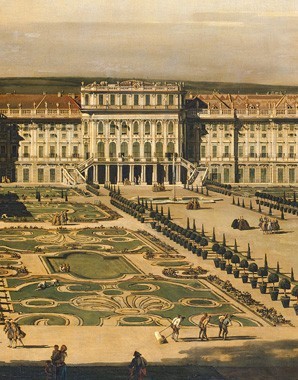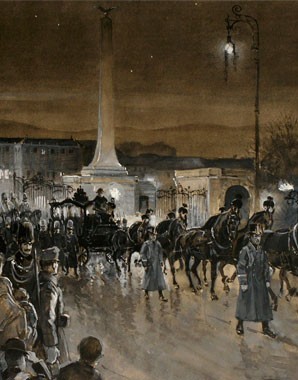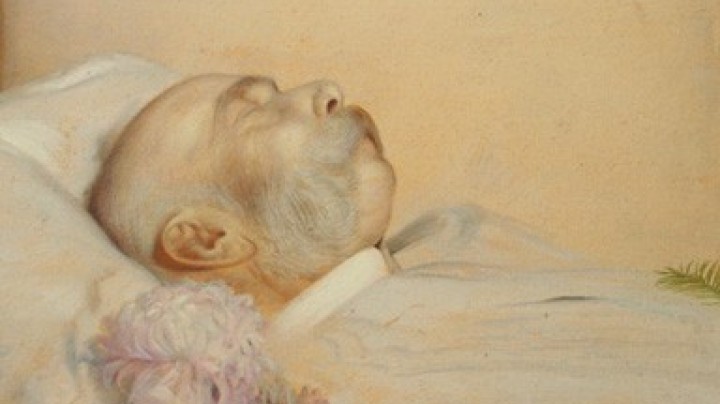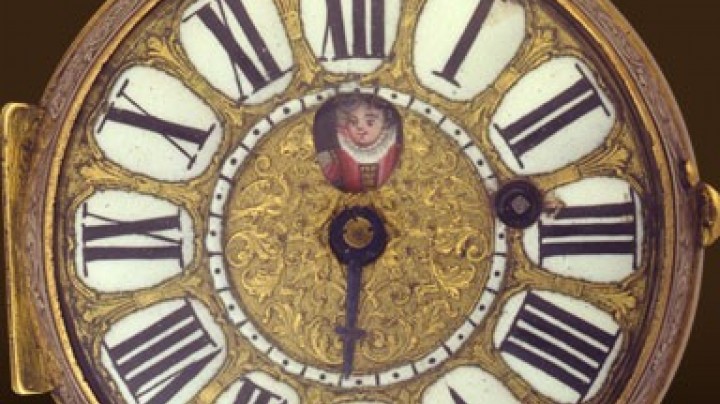Schönbrunn in the inter-war period – a palace without an emperor
‘Emperor Karl and Empress Zita have this evening quitted Schönbrunn Palace. … The Imperial Family’s departure took place quietly and almost unnoticed by the public.’
One day after his abdication, the Wiener Zeitung of 12 November 1918 reported that the Emperor had left Schönbrunn. And what happened on 13 November? A ticket office and souvenir shop were opened and tourists flocked to see the palace? Not quite, even if the palace did indeed soon become an attraction for visitors from all over the world. However, until Schönbrunn became a tourist attraction in its present form the building was to experience a chequered history.
Like all the imperial palaces, after the end of the Monarchy Schönbrunn passed into state ownership. The doors were initially sealed and a commission entrusted with the task of drawing up an inventory of its contents. However, Schönbrunn was not just the residence of the imperial family; substantial numbers of staff lived in the sprawling palace complex, all of whom retained their right of residence.
There were numerous plans for the future use of the palace, which were however regarded with extreme scepticism by the old-established residents. One of the first schemes saw the quartering of disabled ex-servicemen in the palace. In the summer of 1919 the Kinderfreunde, a children’s organization run by the Social Democratic Party, established a children’s home in one of the ancillary buildings of the palace – an event not exactly welcomed by the residents – together with a training school for nursery school teachers, both of which however lasted only a few years due to organizational problems: the palace was difficult to heat, and the sanitary arrangements left much to be desired. The rooms had to be heated from the early hours of the morning to achieve an adequate temperature for lessons to take place, and the children had to bathe in zinc tubs set up for the purpose.
The use of the palace complex as a school, children’s home and for disabled ex-servicemen did not affect the Imperial Apartments, which were to be turned into a museum. There is evidence that tours of the palace were already taking place by 1919. Interestingly, during the 1920s admission charges for foreigners (including the citizens of former Crown Lands) were double that for Austrians – and Germans. By the end of the 1920s around 20,000 visitors a month were being shown round the palace. And what about the first souvenir vendors? They did not lag far behind: at a certain place in the rooms on public view stood a photographer who would take pictures of groups of visitors, copies of which could be sent to them for a fee.

















